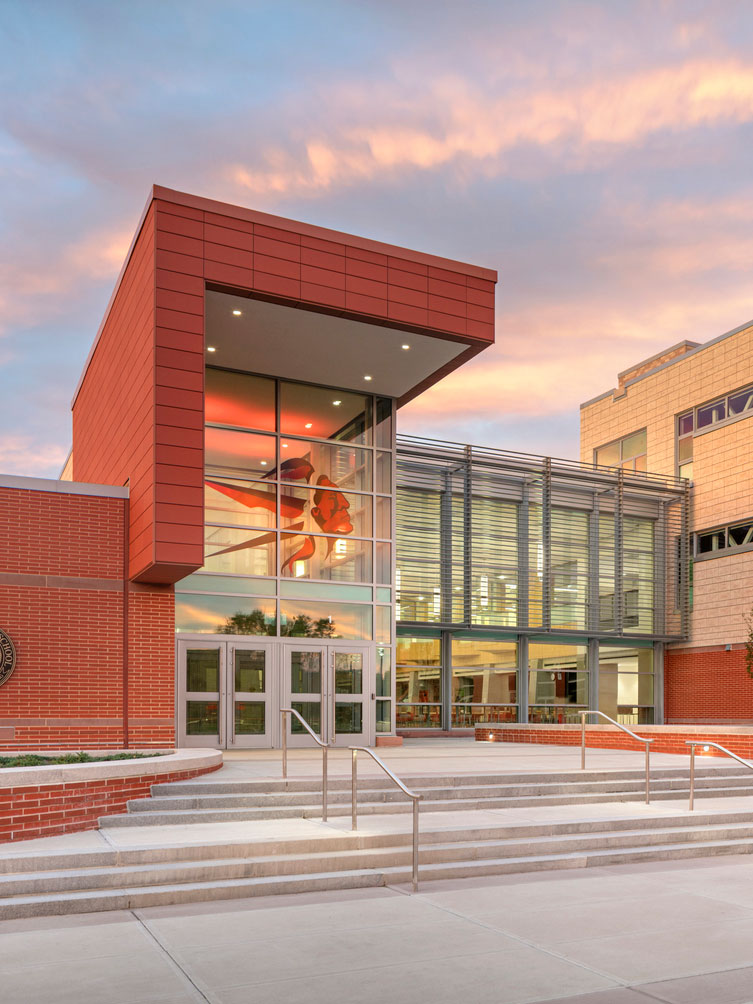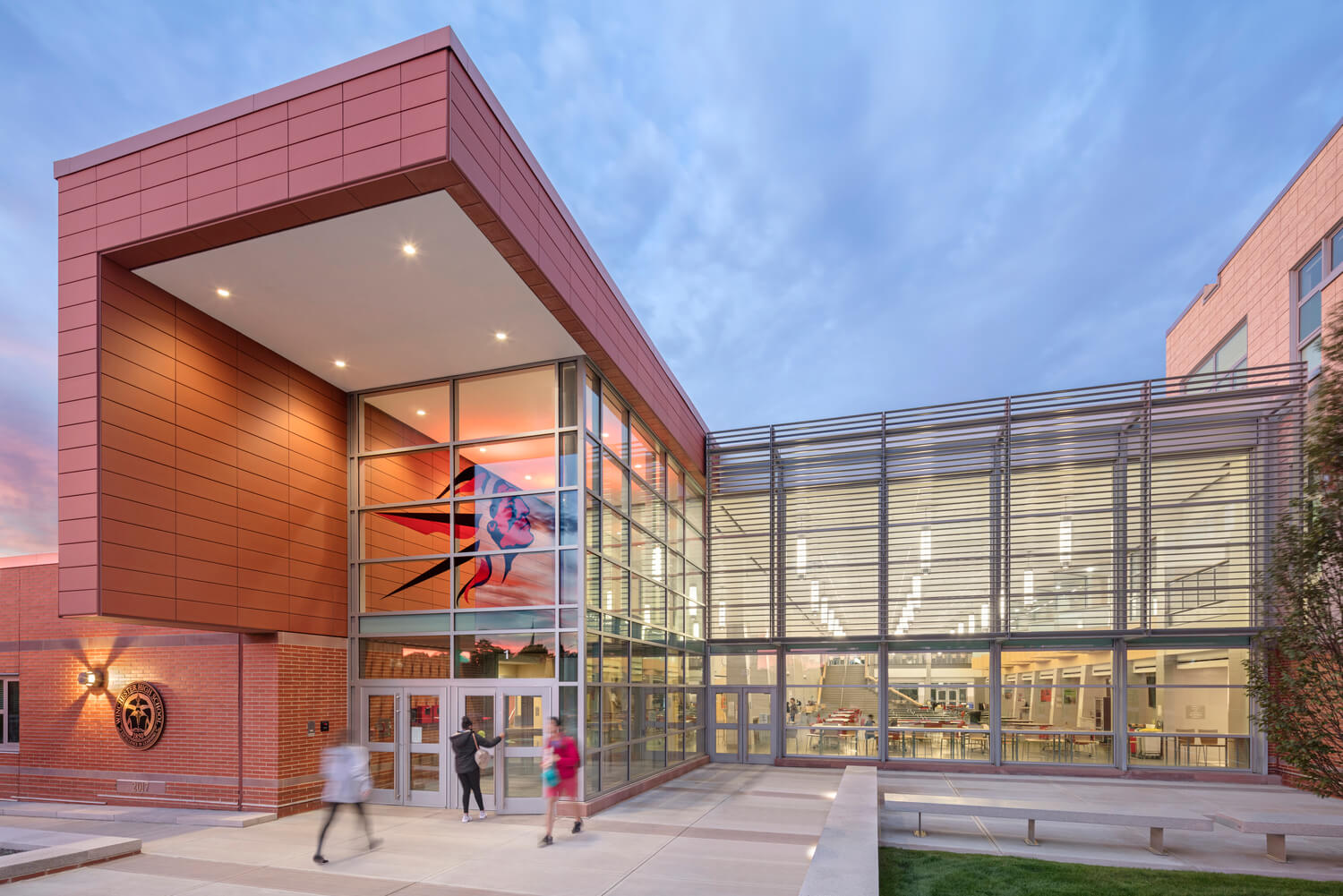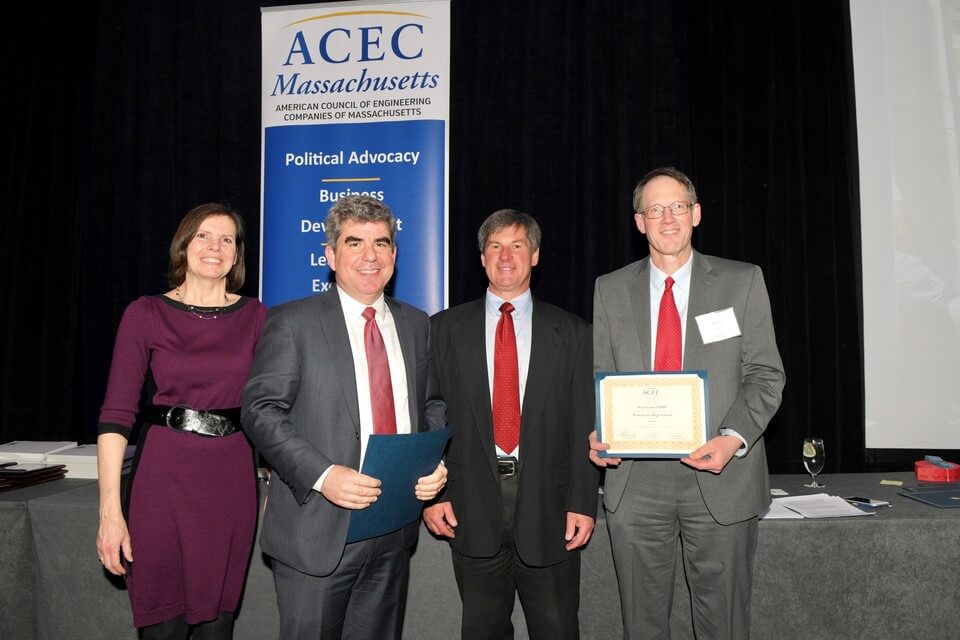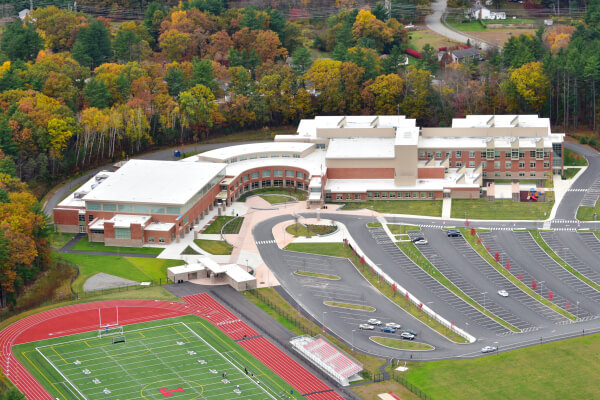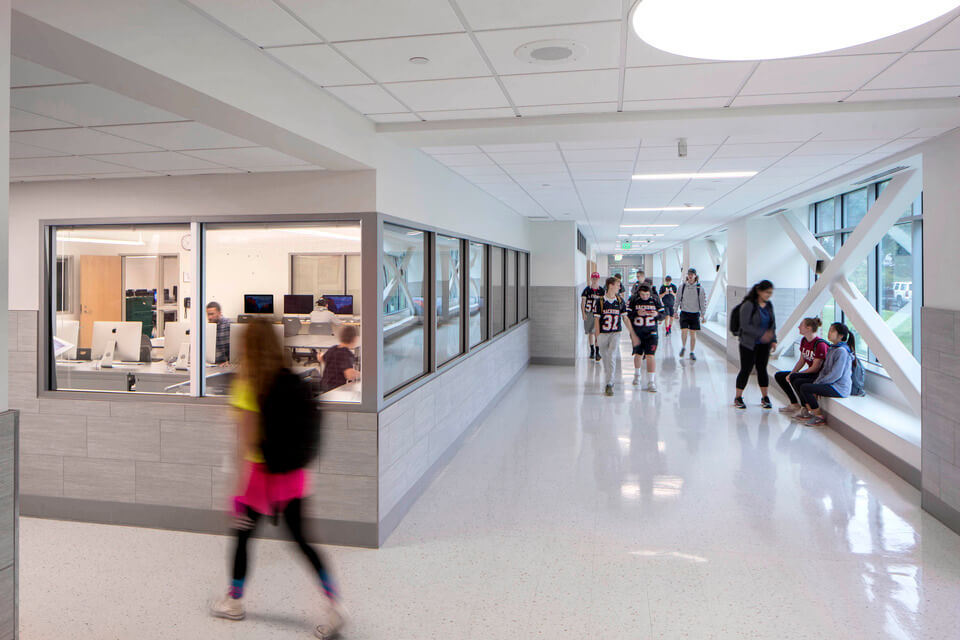
Rigorous educational planning resulted in a design that supports a wide range of learning styles, with co-located classrooms for integrated learning and collaboration.
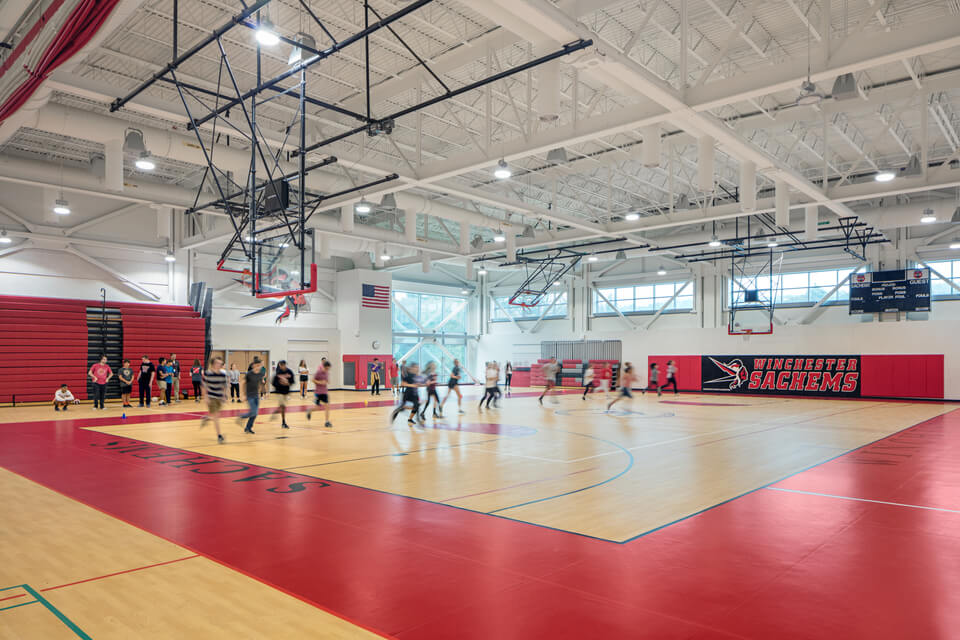
The design reverses the old school’s educational plan.
Classrooms and student spaces move to the perimeter, enjoying more natural light. Secondary classrooms and support spaces move towards the core of the building. Specific classroom “wings” correspond to different subjects, such as arts instruction or STEM learning.
Within these wings, the school’s STEAM (STEM, plus the arts) programs sit side-by-side. The design replaces outdated workshops, equipment, and inflexible isolated rooms with multi-layered and connected programs. Visual and performing arts programs sit in close proximity to the new Innovation Lab, creating more opportunities for integrated programming.
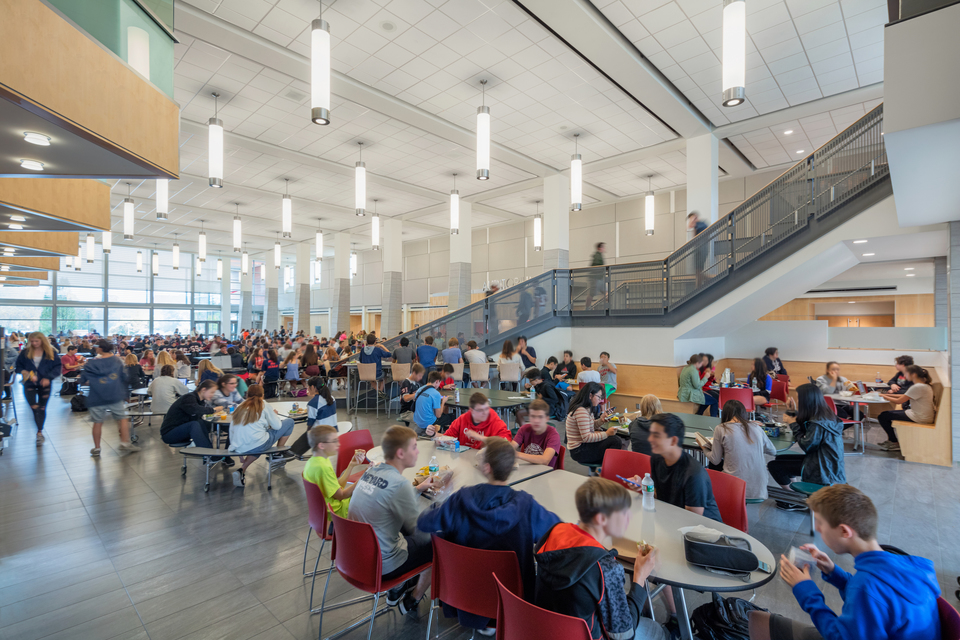
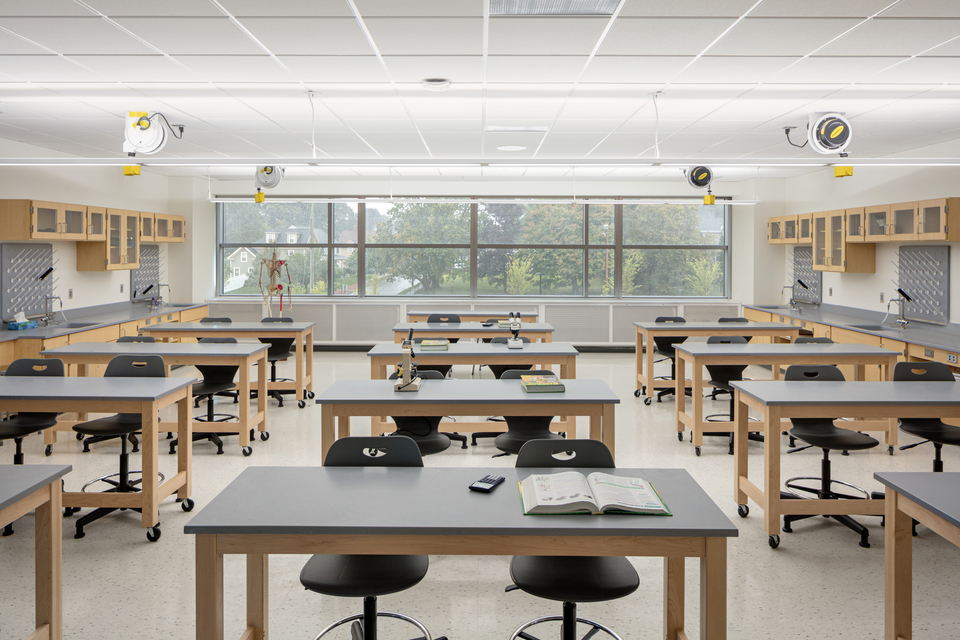
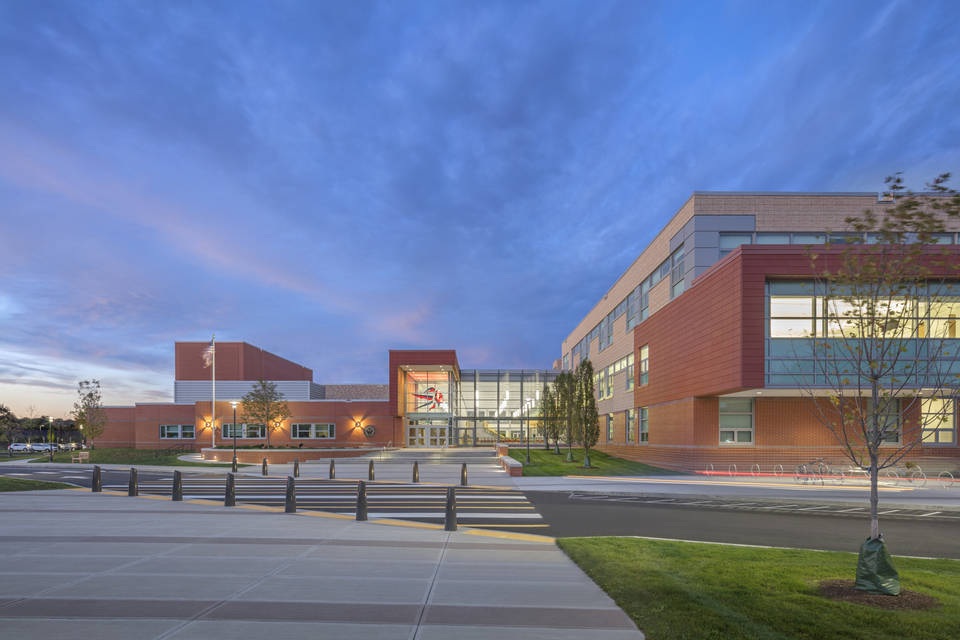
A sinking site posed an engineering challenge.
The original Winchester High School was built on top of a landfill surrounded by a floodplain. SMMA’s engineers found a solution by using extraordinary bracing to stiffen the massive concrete building frame and prevent settlement over time. This was achieved via pressured injected footings, helical piles, and tilt slabs.

The Winchester community puts sustainability first.
At the behest of the Town, the project team achieved a high-performance, eco-friendly design that conserves much of the building’s embodied carbon.
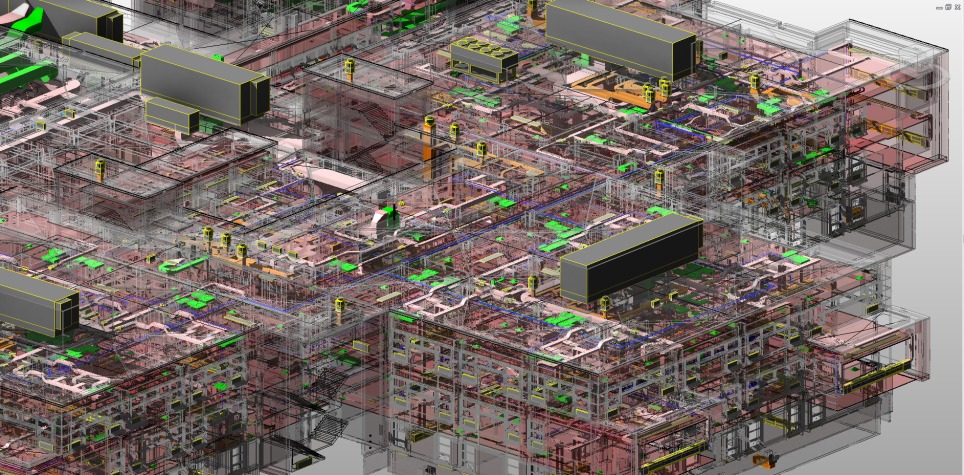
Thanks to energy-efficient systems, the renovation saw a huge drop in Predicted Energy Use (pEUI) from 72 to 45. Even with evening and weekend use by the community, the actual Energy Use (EUI) remains impressive at 41.6 kBtu per square foot per year.
An initial feasibility study showed that a nearby forest was the only viable location for a new school. Rather than remove the forest, the Town and SMMA agreed to redevelop the existing site for the benefit of the community.
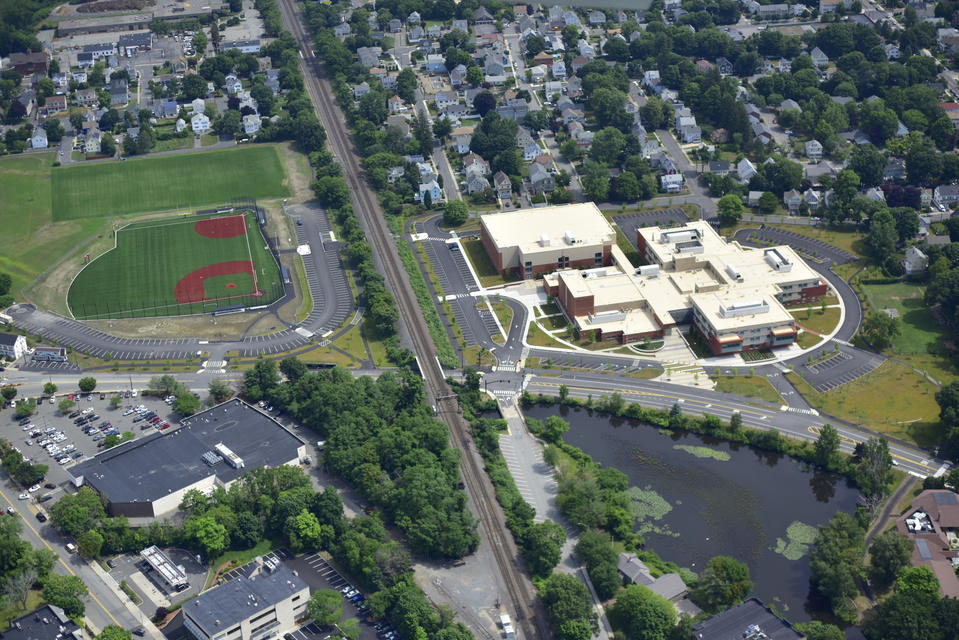
By reinvigorating the previously dark, heavy frame, the project conserved 92% of the embodied energy from the existing structure. The exposed brick-and-concrete frame is enclosed in a new energy-efficient skin, while replaced windows use a high-performing glazing system.
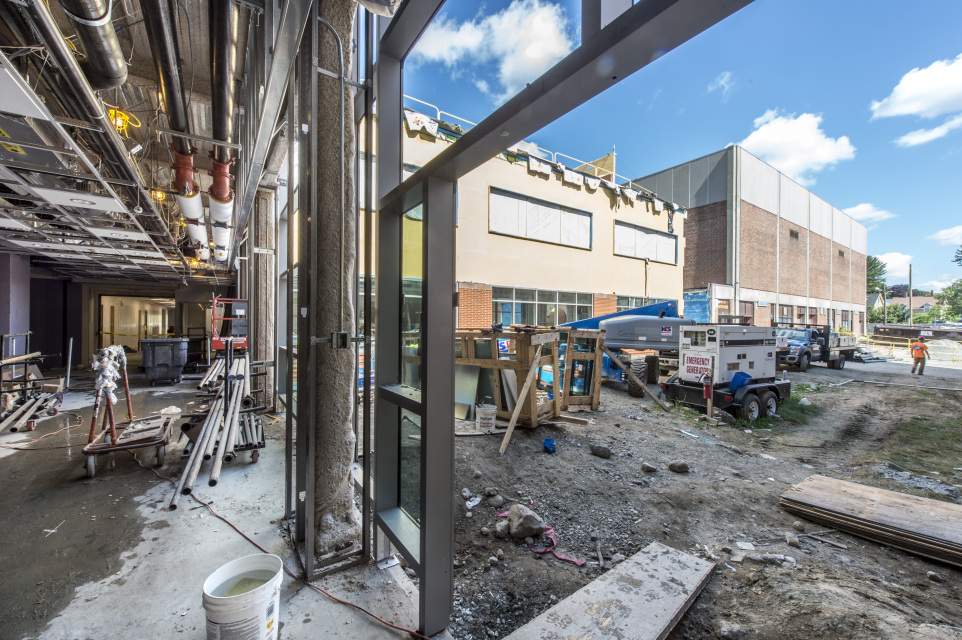
Near-universal use of LED lighting, combined with a digital lighting control system, ensures less lighting power density and energy consumption.
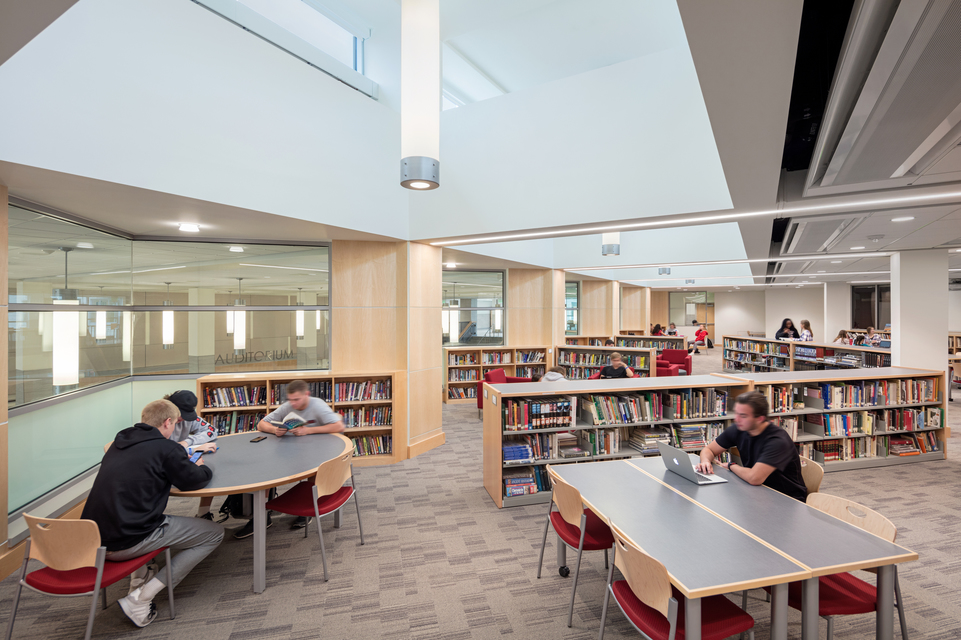
The mechanical design uses an innovative combo of displacement ventilation and horizontal chilled beams. This ensures both energy-efficient cooling and enhanced ventilation.
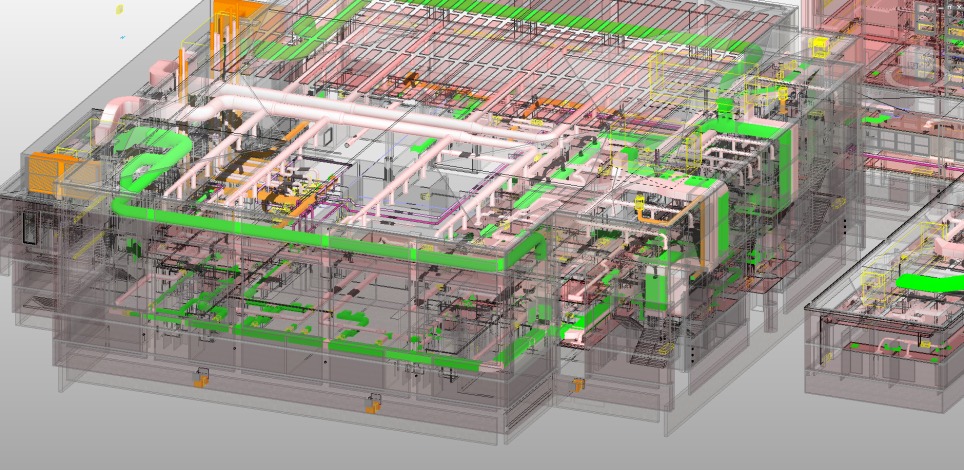
The initial target of LEEDv3 Silver was exceeded—the final design achieves LEEDv3 Gold.
85,430 lbs
of galvanized steel
3,522lbs
of aluminum
91,430 lbs
of carbon steel
5.5 miles
of ductwork
10.5 miles
of piping

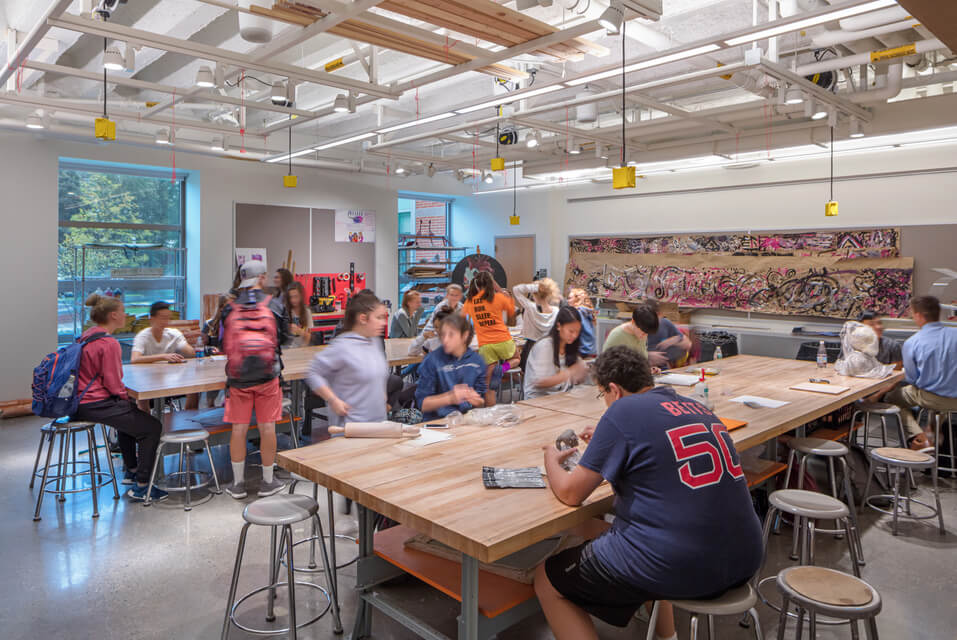
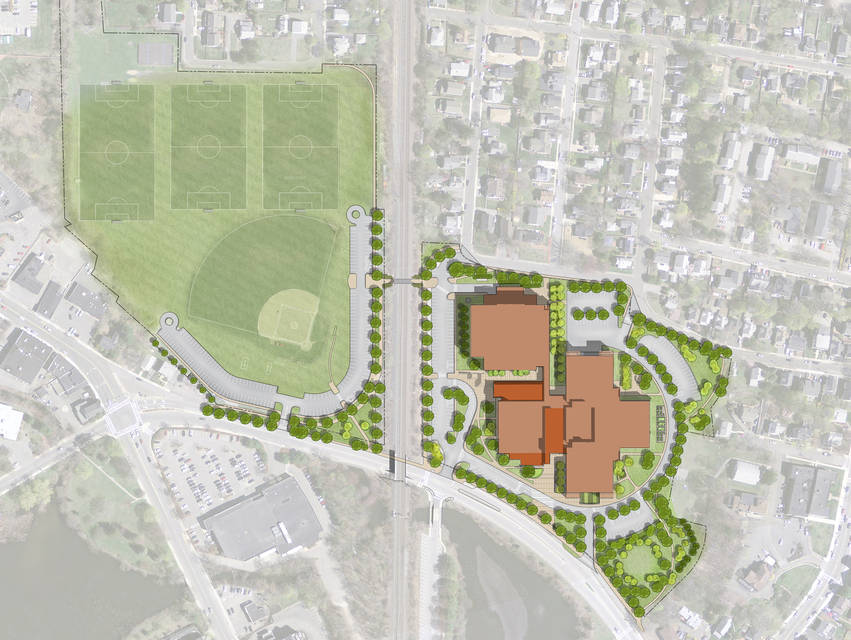
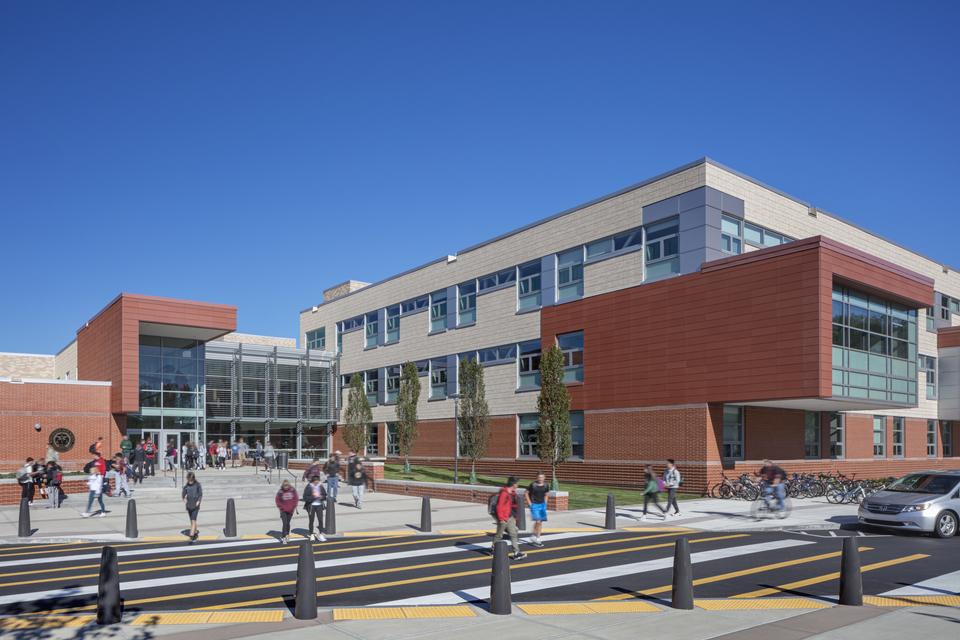
“SMMA was successful in transforming what was a nearly 50-year-old worn and poorly functioning building with multiple system failures into a vibrant, well-planned modern educational facility. This campus will inspire both students and teachers in their daily classwork for years to come.”
Richard C. Howard, Winchester Town Manager
